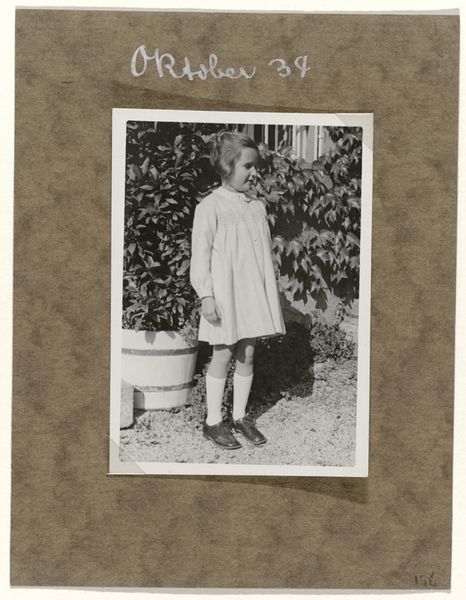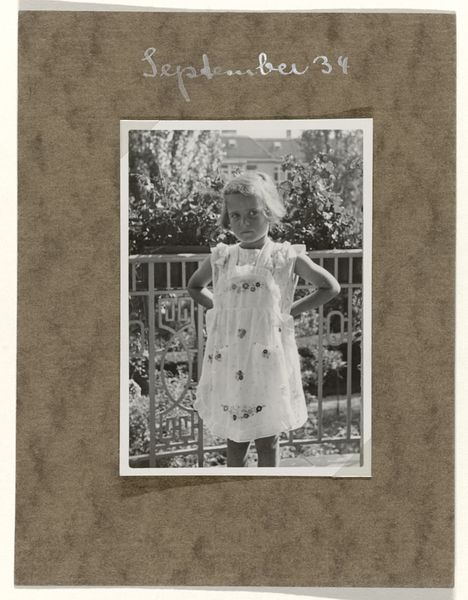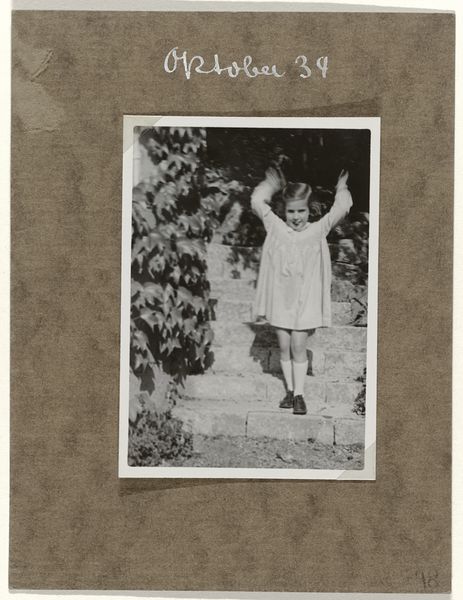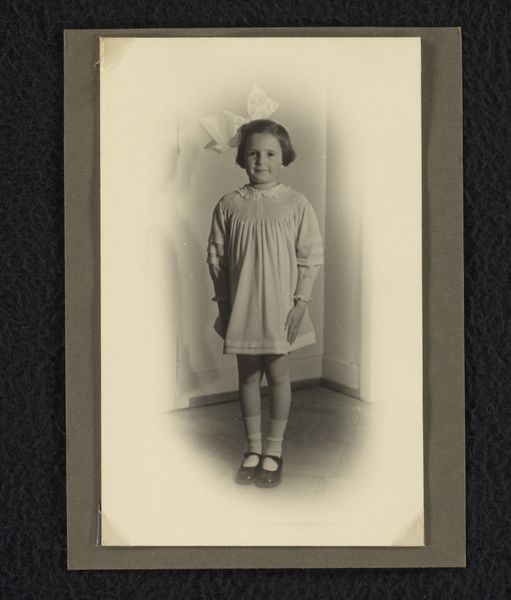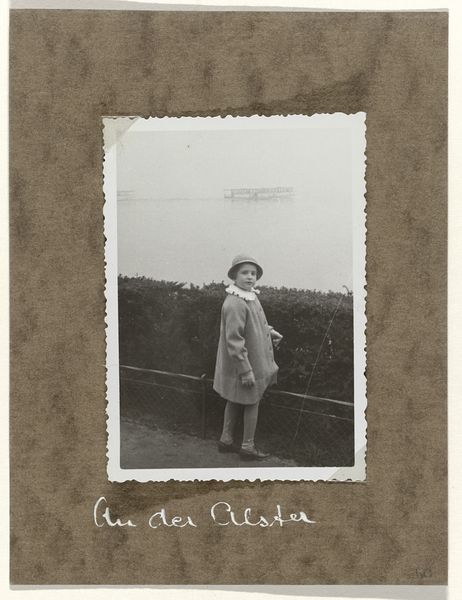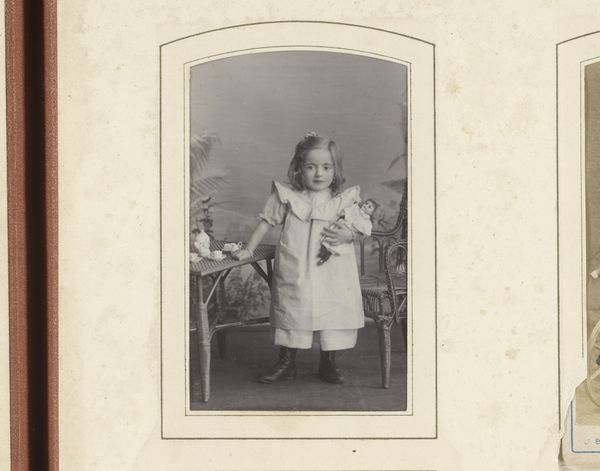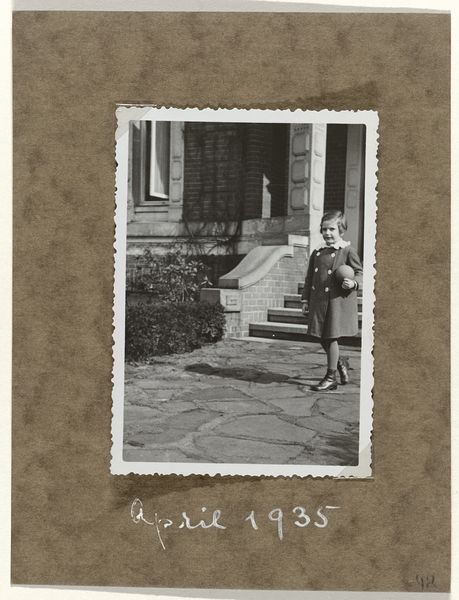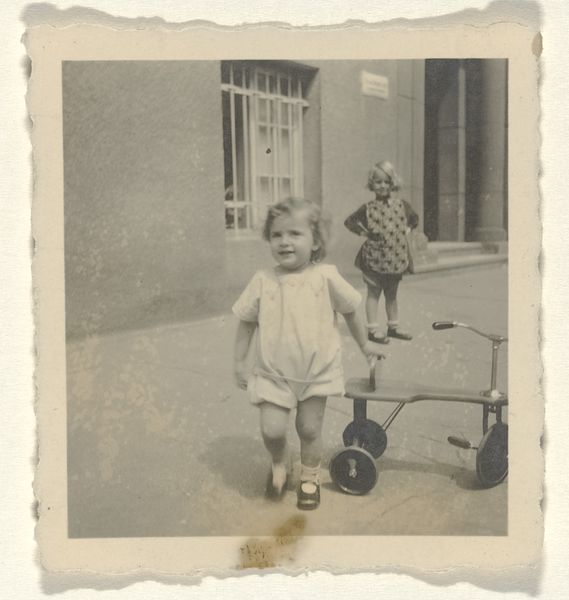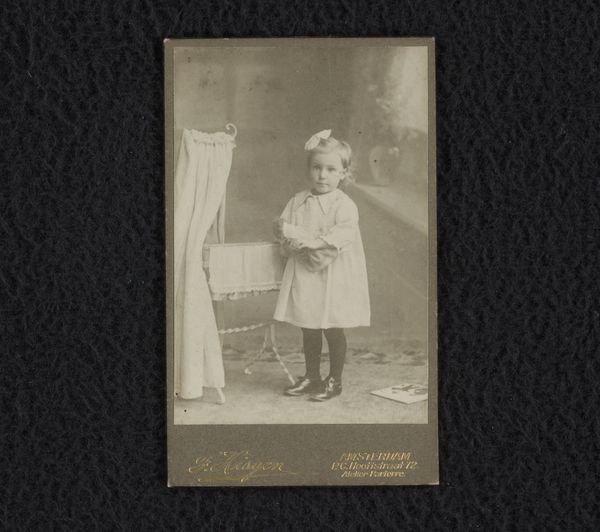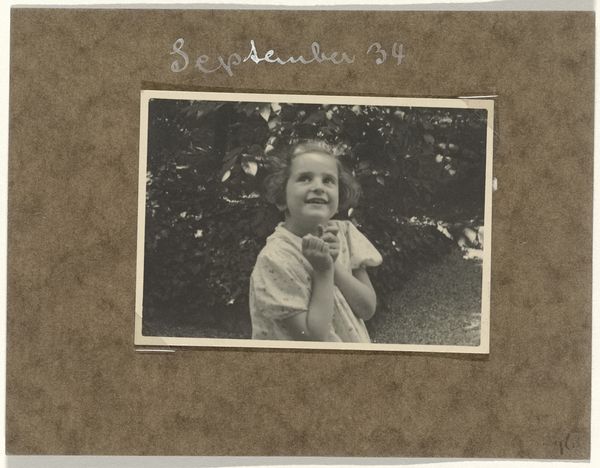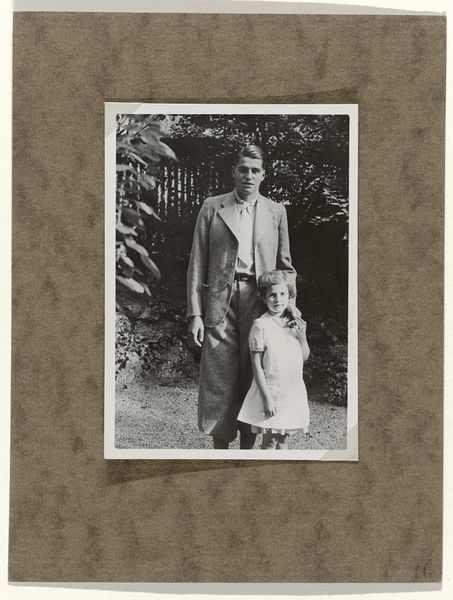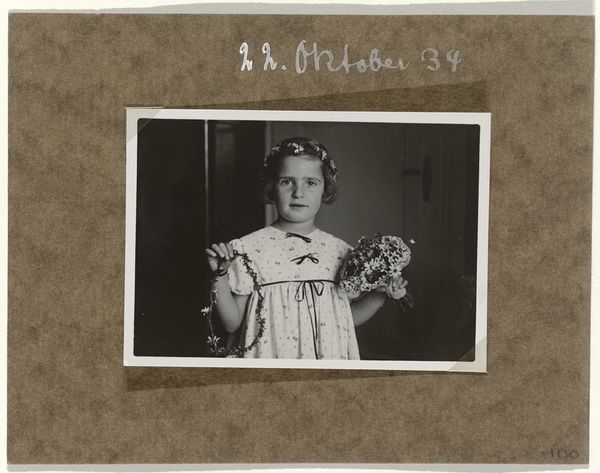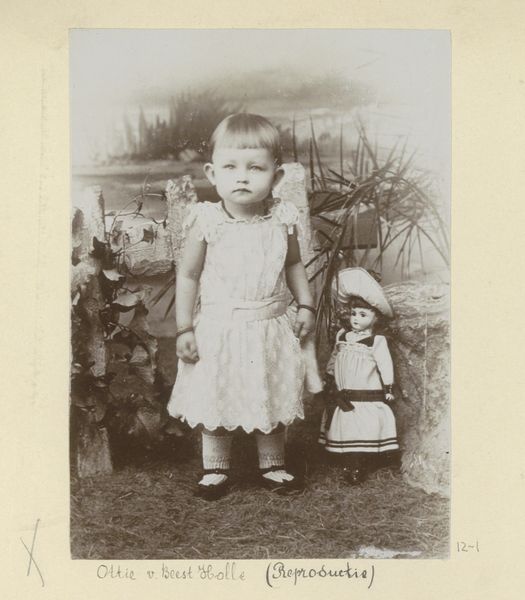
photography, gelatin-silver-print
#
portrait
#
still-life-photography
#
street-photography
#
photography
#
historical photography
#
gelatin-silver-print
#
modernism
Dimensions: height 90 mm, width 65 mm
Copyright: Rijks Museum: Open Domain
Editor: Here we have an older photograph, "Isabel Wachenheimer in gestreepte jurk voor huizenrij," possibly taken around 1934 or 1935, and it’s a gelatin-silver print. It shows a young girl in a striped dress skipping rope. There’s something very ordinary about the scene, and yet, seeing it now, knowing the period, I wonder... How do you interpret this work? Curator: That feeling of unease is precisely what the historical context brings to this image. While seemingly a simple portrait, knowing it was taken in the 1930s, likely in Europe, dramatically shifts our understanding. What does it mean to capture a child’s innocence on the brink of such upheaval? The very act of documenting this girl's life, potentially knowing what was coming, becomes a powerful statement. How does that awareness change your initial perception? Editor: It makes me think about what the photographer intended to convey and what was ultimately captured unknowingly. There's an unsettling dichotomy between the innocent play and the looming threat of history. Were they aware of the rising dangers? Did that impact the work? Curator: Precisely! The photo becomes a potent symbol of vulnerability and lost innocence in the face of escalating political and social turmoil. Photography, at this time, steps up as a crucial witness to daily life that history often overlooks. The question of agency also arises: did Isabel have any say in this portrayal of her youth? Who holds the power in the creation and consumption of images like these? Editor: I hadn't considered the issue of power and agency like that. The photo feels heavier now, weighed down by unspoken narratives and historical anxieties. Curator: Yes, by analyzing the image through a lens of historical and social awareness, we uncover layers of meaning beyond the purely visual. The everyday becomes profoundly political, prompting reflections on identity, representation, and the enduring impact of history. Editor: This definitely provides new insights into reading seemingly simple portrait photography from this era. Curator: And it encourages a more critical dialogue with historical images in general.
Comments
No comments
Be the first to comment and join the conversation on the ultimate creative platform.
